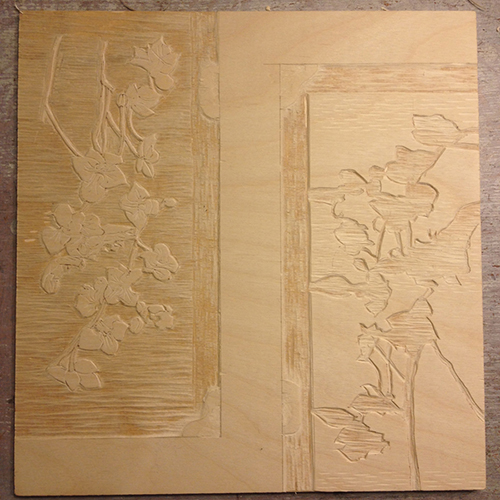Goats Herons & Whales
Netsuke - Recumbent Goat
In the last week I've been trying out my new tools carving a galloping horse and an ama suckling an octopus. Today I've carved a larger Recumbent Goat from Edmund De Waal's collection on magnolia wood. The resulting print is much better than the print I made from the smaller sketch.
Heron
Alongside this new netsuke project I have been working on another carving which is much bigger than the netsuke.
I make a simple sketch of the heron directly on to the larger plywood, then trace the outline with black pen. It's much more tough to cut than the magnolia but I'm not ready to blunt my new tools yet so I carve the heron into plywood with my old tools. As the sketch is quite loose, it frees up the carving resulting in an imperfect but dynamic heron.
Travelling with Birch Plywood
I bought this plywood a few years ago. This gigantic piece of birch plywood was stacked amongst more gigantic pieces of plywood in the warehouse of Robbins Timber Yard. I had cycled up to buy the wood and didn't think about the logistics of getting this giant home! They kindly offered to cut the plywood into smaller squares so we went for 30cm x 30cm. Even at 30cm x 30cm, when you have over twenty of these, it's a heavy load for a bicycle but somehow miraculously I managed to fit them all into my panniers and cycle home without any problems. I remember as soon as I arrived home I dived into my box of wood cutting tools and started carving immediately. I didn't draw or trace an image first, I just carved straight into the wood not knowing where I was going but just following the grain. I enjoyed the freedom of just letting the grain do it's own magic with no preconceived idea or pressure for any kind of result, only the process of carving. When I had finished I had made a carving which was more figurative and than I expected. I didn't have the facilities to print at home so I put it back on the pile and started to work on a new block with the idea of making a two colour print.
Woodblock Registration Block
I had kept the copy of Peter Brown's clear instructions for registration and re-written these for myself help me clarify the process. I drew out the registration marks. Instead of carving the block I initiated the idea of bringing the blocks to a fellow print making friend's house with a view to exploring the process of two colour prints together. If we could get our heads around it together, we might get there quicker. So one morning I arrived with the blocks with my instructions in my bag and as I pulled the blocks out of my bag my heart sank. I realised my idea wasn't going to work. One of us needed to have some knowledge on how to do this and I had given the impression that I did know but I had spent just one day on a Japanese woodblock printing course and hadn't got my head around the two colour printing. I was not ready to step into this process as a group until I had got to grips with the process myself.
I had lost the enthusiasm to print the first image which had felt so dynamic and free. So instead of following up on my quest to get more experience I felt so overwhelmed by what felt like a huge hurdle that I left the blocks stacked up in a pile under my desk at home gathering dust.
Whales
A few months ago when I brought the blocks to my studio I finally made the time and space to have a go at printing this block which I had enjoyed carving so much. I used my letterpress inks with a hand roller; laid a large piece of white somerset satin 300gsms paper on the plywood and rubbed the back of the paper with a baren. When I peeled back the paper there was a sea of swimming whales and mountains flowing from the wood. Although it's a faint print and would need a press to get a good even solid colour I like the immediacy of the image and free flowing expansiveness.









